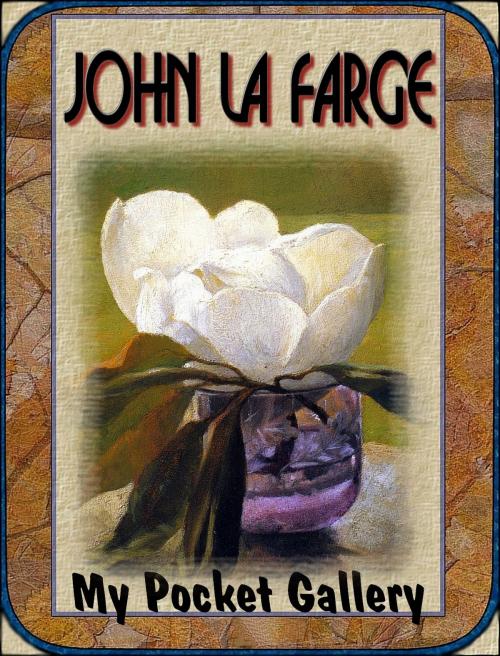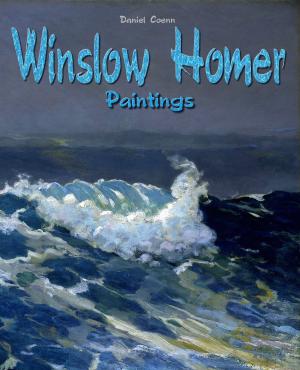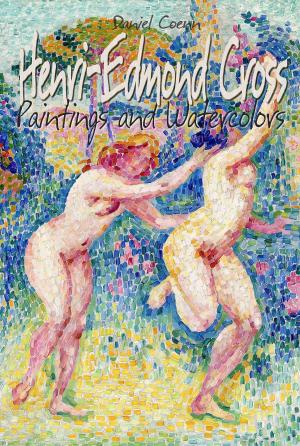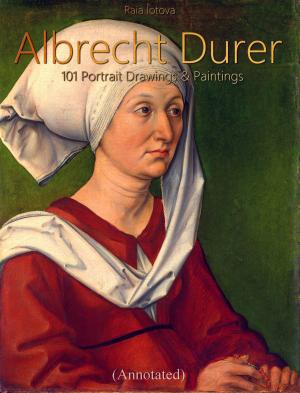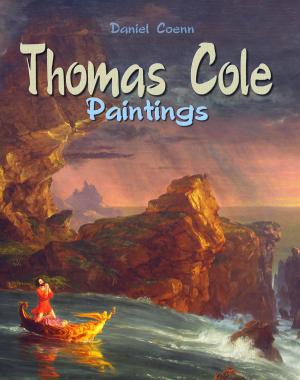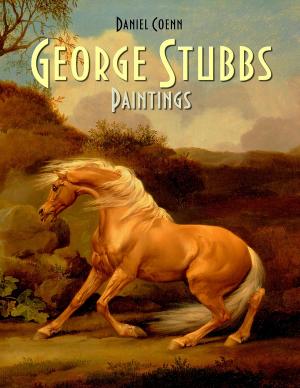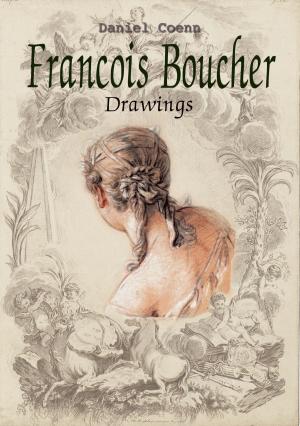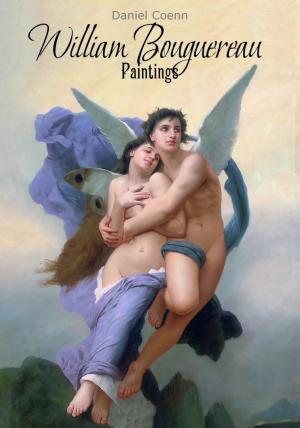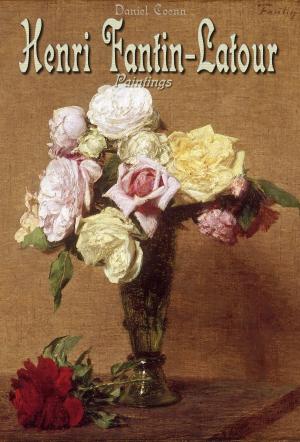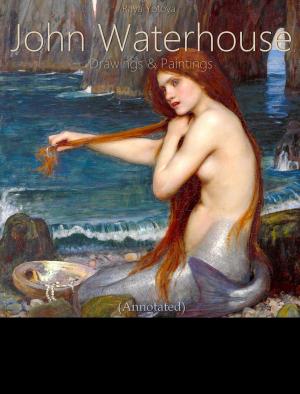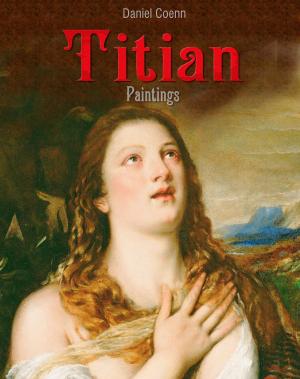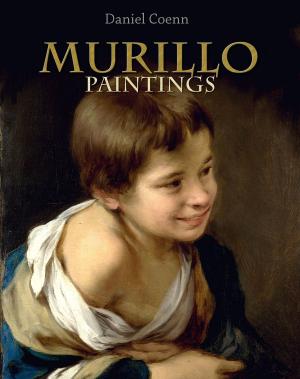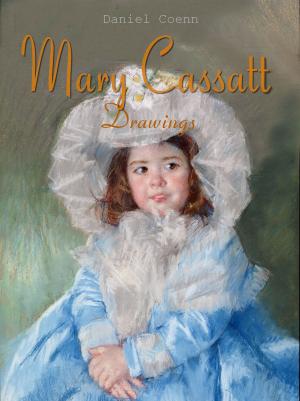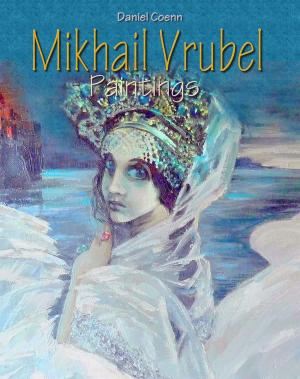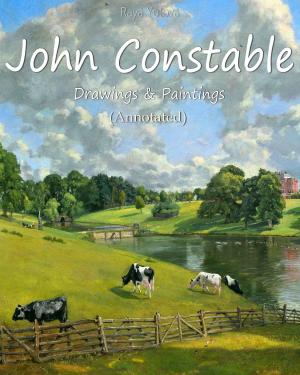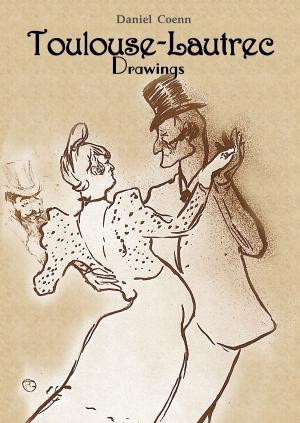John La Farge
85 Master Pieces
Biography & Memoir, Artists, Architects & Photographers, Nonfiction, Art & Architecture| Author: | Daniel Coenn | ISBN: | 1230000025558 |
| Publisher: | Classic & Annotated | Publication: | October 13, 2012 |
| Imprint: | 1 | Language: | English |
| Author: | Daniel Coenn |
| ISBN: | 1230000025558 |
| Publisher: | Classic & Annotated |
| Publication: | October 13, 2012 |
| Imprint: | 1 |
| Language: | English |
John LaFarge (March 31, 1835 – November 14, 1910) was an American painter, muralist, stained glass window maker, decorator, and writer. LaFarge was born in New York City to wealthy French parents. His interest in art began during his studies at Mount St. Mary's University in Maryland and St. John's College (now Fordham University) in New York. He initially intended to study law, but this changed after his first visit to Paris, France in 1856. Stimulated by the arts in the city, he studied with Thomas Couture and became acquainted with notable literary people. LaFarge also studied with the painter William Morris Hunt in Newport, Rhode Island. LaFarge's earliest drawings and landscapes, from his studies in Newport, show marked originality, especially in the handling of color values. He was a pioneer in the study of Japanese art, the influence of which is seen in his work. In the 1870s, LaFarge began to do murals, which became popular for public buildings as well as churches. His first mural was done in Trinity Church, Boston, in 1873. Then followed his decorations in the Church of the Ascension (the large altarpiece) and St. Paul's Chapel (Columbia University), New York. For the Minnesota State Capitol at St. Paul, he executed at age 71 four great lunettes representing the history of law. He created a similar series based on the theme of Justice for the State Supreme Court building at Baltimore, Maryland. LaFarge made extensive travels in Asia and the South Pacific, which inspired his painting. He visited Japan in 1886, and the South Seas in 1890 and 1891, in particular spending time and absorbing the culture of Tahiti. Henry Adams accompanied him on these trips as a travel companion. He visited Hawaii in September of 1890, where he painted scenic spots on Oahu and traveled to the Island of Hawaii to paint an active volcano.
LaFarge made extensive travels in Asia and the South Pacific, which inspired his painting. He visited Japan in 1886, and the South Seas in 1890 and 1891, in particular spending time and absorbing the culture of Tahiti. Henry Adams accompanied him on these trips as a travel companion. He visited Hawaii in September of 1890, where he painted scenic spots on Oahu and traveled to the Island of Hawaii to paint an active volcano.
LaFarge made extensive travels in Asia and the South Pacific, which inspired his painting. He visited Japan in 1886, and the South Seas in 1890 and 1891, in particular spending time and absorbing the culture of Tahiti. Henry Adams accompanied him on these trips as a travel companion. He visited Hawaii in September of 1890, where he painted scenic spots on Oahu and traveled to the Island of Hawaii to paint an active volcano.
LaFarge made extensive travels in Asia and the South Pacific, which inspired his painting. He visited Japan in 1886, and the South Seas in 1890 and 1891, in particular spending time and absorbing the culture of Tahiti. Henry Adams accompanied him on these trips as a travel companion. He visited Hawaii in September of 1890, where he painted scenic spots on Oahu and traveled to the Island of Hawaii to paint an active volcano.
La Farge experimented with color problems, especially in the medium of stained glass. He rivaled the beauty of medieval windows and added new resources by inventing opalescent glass and by his original methods of superimposing and welding his materials. He received the Cross of the Legion of Honor from the French Government, was elected president of National Society of Mural Painters from 1899 through 1904, and was a member of the principal artistic societies of the United States.
He received the Cross of the Legion of Honor from the French Government, was elected president of National Society of Mural Painters from 1899 through 1904, and was a member of the principal artistic societies of the United States.
He received the Cross of the Legion of Honor from the French Government, was elected president of National Society of Mural Painters from 1899 through 1904, and was a member of the principal artistic societies of the United States.
He received the Cross of the Legion of Honor from the French Government, was elected president of National Society of Mural Painters from 1899 through 1904, and was a member of the principal artistic societies of the United States.
In 1904, he was one of the first seven artists chosen for membership in the American Academy of Arts and Letters
John LaFarge (March 31, 1835 – November 14, 1910) was an American painter, muralist, stained glass window maker, decorator, and writer. LaFarge was born in New York City to wealthy French parents. His interest in art began during his studies at Mount St. Mary's University in Maryland and St. John's College (now Fordham University) in New York. He initially intended to study law, but this changed after his first visit to Paris, France in 1856. Stimulated by the arts in the city, he studied with Thomas Couture and became acquainted with notable literary people. LaFarge also studied with the painter William Morris Hunt in Newport, Rhode Island. LaFarge's earliest drawings and landscapes, from his studies in Newport, show marked originality, especially in the handling of color values. He was a pioneer in the study of Japanese art, the influence of which is seen in his work. In the 1870s, LaFarge began to do murals, which became popular for public buildings as well as churches. His first mural was done in Trinity Church, Boston, in 1873. Then followed his decorations in the Church of the Ascension (the large altarpiece) and St. Paul's Chapel (Columbia University), New York. For the Minnesota State Capitol at St. Paul, he executed at age 71 four great lunettes representing the history of law. He created a similar series based on the theme of Justice for the State Supreme Court building at Baltimore, Maryland. LaFarge made extensive travels in Asia and the South Pacific, which inspired his painting. He visited Japan in 1886, and the South Seas in 1890 and 1891, in particular spending time and absorbing the culture of Tahiti. Henry Adams accompanied him on these trips as a travel companion. He visited Hawaii in September of 1890, where he painted scenic spots on Oahu and traveled to the Island of Hawaii to paint an active volcano.
LaFarge made extensive travels in Asia and the South Pacific, which inspired his painting. He visited Japan in 1886, and the South Seas in 1890 and 1891, in particular spending time and absorbing the culture of Tahiti. Henry Adams accompanied him on these trips as a travel companion. He visited Hawaii in September of 1890, where he painted scenic spots on Oahu and traveled to the Island of Hawaii to paint an active volcano.
LaFarge made extensive travels in Asia and the South Pacific, which inspired his painting. He visited Japan in 1886, and the South Seas in 1890 and 1891, in particular spending time and absorbing the culture of Tahiti. Henry Adams accompanied him on these trips as a travel companion. He visited Hawaii in September of 1890, where he painted scenic spots on Oahu and traveled to the Island of Hawaii to paint an active volcano.
LaFarge made extensive travels in Asia and the South Pacific, which inspired his painting. He visited Japan in 1886, and the South Seas in 1890 and 1891, in particular spending time and absorbing the culture of Tahiti. Henry Adams accompanied him on these trips as a travel companion. He visited Hawaii in September of 1890, where he painted scenic spots on Oahu and traveled to the Island of Hawaii to paint an active volcano.
La Farge experimented with color problems, especially in the medium of stained glass. He rivaled the beauty of medieval windows and added new resources by inventing opalescent glass and by his original methods of superimposing and welding his materials. He received the Cross of the Legion of Honor from the French Government, was elected president of National Society of Mural Painters from 1899 through 1904, and was a member of the principal artistic societies of the United States.
He received the Cross of the Legion of Honor from the French Government, was elected president of National Society of Mural Painters from 1899 through 1904, and was a member of the principal artistic societies of the United States.
He received the Cross of the Legion of Honor from the French Government, was elected president of National Society of Mural Painters from 1899 through 1904, and was a member of the principal artistic societies of the United States.
He received the Cross of the Legion of Honor from the French Government, was elected president of National Society of Mural Painters from 1899 through 1904, and was a member of the principal artistic societies of the United States.
In 1904, he was one of the first seven artists chosen for membership in the American Academy of Arts and Letters
